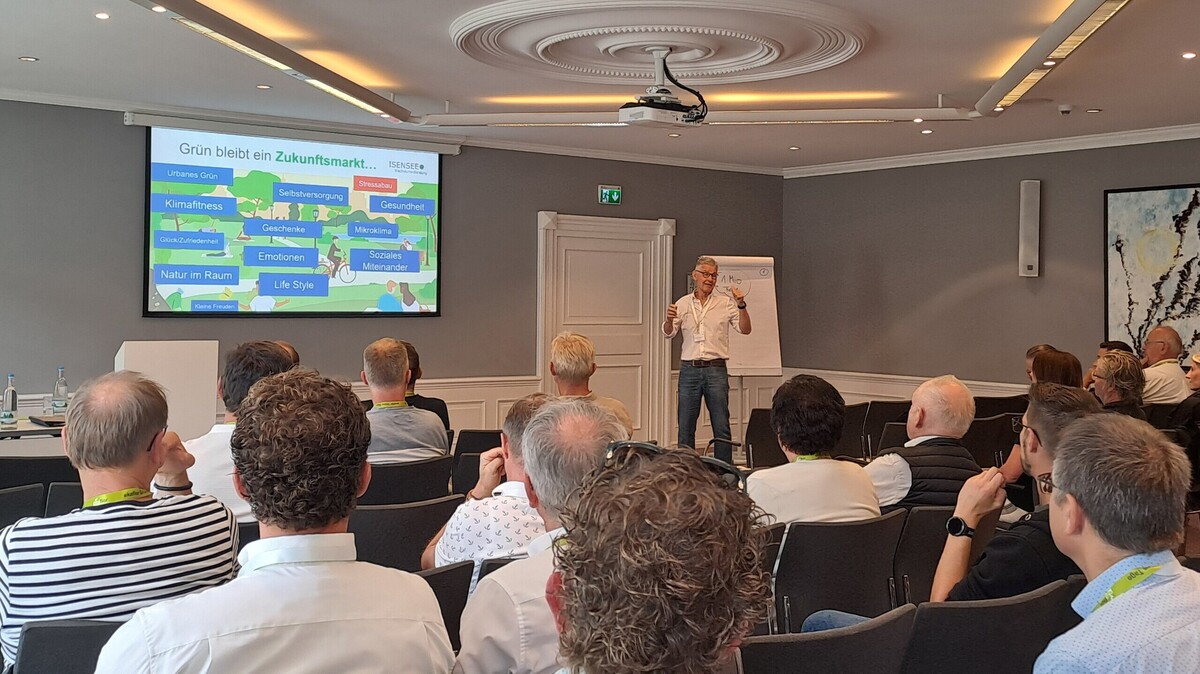‘Green remains a market of the future’ – this is a key statement, even in a stagnating overall market. Although specialist retailers are losing ground in terms of both volume and share of expenditure, the future may belong to retail garden centres: with regional roots, sustainable, cross-generational management, local value creation through high-quality in-house production and the promotion of flowers and plants, proximity to the people in the team and to customers, and services that guarantee added value and joie de vivre.
The fact that every business is different is a good thing and means that there will be no blanket solutions for the future, but all the more cooperation at the grassroots level. Because, of course, the challenges on the cost and competition side are increasing. One example cited was the planned increase in the minimum wage from €13.90 on 1 January 2026 to €14.60 on 1 January 2027, which will have a particular impact on the overall wage level of all employees.
Anyone who wants to at least maintain their operating results, win new customers, earn an entrepreneurial salary of at least €60,000 to €100,000 commensurate with the demanding management tasks, and at the same time preserve their fixed assets, is challenged in this demanding environment to continue to take the initiative: Shaping the future differently than the past, new challenges mean new measures, always with a view to added value for customers.
Isensee demonstrated the potential by looking at the very different sales shares in the product groups from the ekaflor experience exchange groups, which, for example, show shares of between 9% and 37% in floristry or between 17% and 43% in seasonal plants of annual sales. Again, every business is different in terms of space, location, expertise and staff. But the comparison reveals initial potential and approaches for measures such as increasing employee productivity, investments or increasing space productivity. As Einstein said: ‘The definition of insanity is doing the same thing over and over again and expecting different results.’
Franz Josef Isensee also presented reference figures from the Erfa groups for cost drivers, e.g. with gross profit margins of 55% to 67% and labour costs excluding unpaid family members of between 23% and 39% of turnover. Of course, here too, any comparison is ‘flawed’. Higher added value through services and in-house production increases gross profit and at the same time leads to higher personnel costs. But here, too, only those who have figures can work towards improvement. This is a major advantage of the ekaflor Erfa groups.
Franz Josef Isensee systematised the cost drivers into the groups personnel, procurement, warehouse/inventory, presentation/space, material costs and finances. This allows ‘unnecessary’ expenditure or low productivity to be systematically identified – alone as a manager, with the team or in experience exchange groups. However, Isensee identified ‘the lack of strategy’ as the biggest cost driver. The structure always follows the strategy, i.e. what added value do you offer your customers and what needs to be provided in terms of performance, personnel, service, etc., or better still, what can I leave out because it is not relevant to the target group and results. Less is often more!
In order to exploit the potential that has been proven to exist in many retail nurseries, it makes sense to start by analysing the market position and key figures, then define your individual customer profile, and then set about improving processes and building up the organisation with a focus on customer value and profit centres (how do I want to earn money?). Not to forget the use of technology: how can I eliminate time-consuming activities altogether or, if that is not possible, make them easier, faster and more efficient with technology? ‘A bad process remains a bad process, even when digitalised!’ One thing is clear: those who do not think digitally today will not sell tomorrow. And that means even more cooperation to develop professional customer apps, content for AI or data for integrated merchandise management processes. These are all issues that ekaflor is working on for its members.
The green retail trade has potential. Believe in yourself and your ideas; with good concepts, financing is possible. ekaflor and Erfa groups support you, and trying things out is the strength of entrepreneurs!
CO CONCEPT offers individual potential consulting, among other things:
- Inventory figures Balance sheet/P&L/BWA
- Where is the potential for sales and earnings at the location?
- How much additional sales are necessary to offset cost increases?
- Price-performance check: current and future profile
- Initial measures to improve results
- The path to a quality strategy
- Controls/checklists for implementation
In addition to individual consulting, Franz Josef Isensee and CO CONCEPT now also offer group potential consulting with three to a maximum of five companies. The potential is determined in one company using the expertise of colleagues and consulting methodology; everyone takes something home with them and hosts the next session.
For further information and enquiries, please contact:
